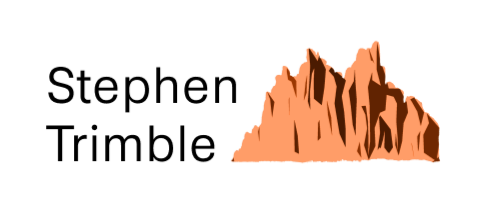The best books about Utah Canyon Country
I’ve recently posted two reading lists on Shepherd.com, a nifty site that features a book by an author and then gives the author the chance to recommend five other books with the same theme. My first list (“The Best Books about Families Struggling with Mental Health”) grew from my research and reading for The Mike File.
I’ve just added a new list, “The Best Books about Utah Canyon Country,” books that resonate with my book, The Capitol Reef Reader. It’s humbling how difficult it is to choose just five “best” books. Here’s how I did it.
I avoided the most obvious first choice, Desert Solitaire—though as you can see from this picture from 1970, I’ve long been a fan!
I don’t recall what prompted me to take this picture of myself in my dorm room at Colorado College encountering Ed Abbey for the first time—other than wanting to capture that warm afternoon light in some way. But it sure seems prescient, given how much of my own life and work circles around those sandstone buttes on the cover.
The next names that come to mind for a redrock literature list—Terry Tempest Williams, Craig Childs—are both fine writers who have devoted followings and probably don't need me to highlight them. But not so many people know Ellen Meloy’s books. So I started with Ellen as my first pick.
Ellen is smart and witty. She’s laugh-out-loud funny. She’s self-deprecatory and never preachy. She gets her natural history right. And her writing is gorgeous. She died far too young, at 58, in 2004, and I miss her. I chose The Anthropology of Turquoise, a book I love.
I did want to include a classic book about the Colorado Plateau, and though it’s almost 70 years old, Wallace Stegner’s Beyond the Hundredth Meridian: John Wesley Powell and the Second Opening of the West is still fundamental bedrock for understanding this place. Stegner takes us along on Powell’s harrowing 1869 river trip down the Colorado River. And then he uses Powell’s growing understanding of our arid West to illuminate the very nature of that desert West. Utah canyon country lies at the heart of his story.
I also wanted a book to bring readers on the wild ride through public lands history since Stegner—and include at least a little of the triumphant story of the five Native nations of the Bears Ears Inter-Tribal Coalition seeing their proposed Bears Ears National Monument become a reality. Jonathan Thompson’s Sagebrush Empire does just that, and it brings us right up to 2021.
I preferred to stick with books in print, so Eliot Porter’s The Place No One Knew: Glen Canyon on the Colorado, Tad Nichols, Glen Canyon: Images of a Lost World, and Jack Dykinga and Charles Bowden’s Stone Canyons of the Colorado Plateau were out. But a newer book full of astonishing images from the surviving slot canyons around Glen Canyon beautifully takes us into those intimate “waterworn rooms” of slickrock: Searching for Tao Canyon by Pat Morrow, Jeremy Schmidt, and Art Twomey.
I hoped to feature younger writers, especially women. Morgan Sjogren is working on a book that I’m looking forward to reading, Path of Light: A Walk Through Colliding Legacies of Glen Canyon, She’s retraced the 1920s Bernheimer canyon country expeditions, often with experts and elders, Native and non-Native. She has much to grapple with, as our home territory faces opposing forces Bernheimer never imagined: exploding tourism and a river system diminishing with climate change. As Sjogren watches, Lake Powell shrinks, and Glen Canyon emerges once more—a miracle I thought I’d never see. I trust her to bring us remarkable insights when she comes in from the backcountry with her finished book
But Morgan’s book doesn’t come out till next year, and the website editors wouldn’t let me list a forthcoming book. So my notice here will have to suffice to direct you to the Torrey House Press website for pre-orders!
So I’ve got only one choice left, and it better be good.
It is.
Kevin Jones’s rollicking page-turner, A Quick Trip to Moab: Insurrection in the Wilderness, takes place in the San Rafael Swell. Kevin was famously fired as Utah state archaeologist for standing up for Native rights, and his deep love of cultural history and rock art elevate this thriller. In his yarn, a regular guy—our hero, Stan—stops along the highway with his dog, Speck. A desperate woman, Lily, hides there and needs help. As all three are swept into a chase through the Swell, pursued by armed anti-wilderness extremists, Jones’s characters thoughtfully ponder the future of canyon country while racing for their lives. We’re with them all the way.
I have to admit that Kevin is in my writing group, and so I read many evolving drafts of his book. It’s just gotten better and better, as rewriting so magically accomplishes. It’s gratifying to see the finished product work so well.
So, with constraints and caveats, these are my five picks for the “best” books about Utah Canyon Country. What are yours?


